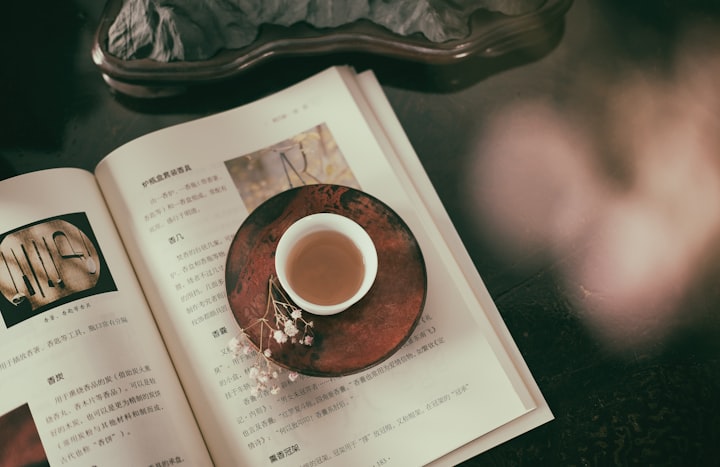Anti-cancer potential of red sage and its tanshinones
Naturally occurring anti-cancer compounds

"Cancer changes your life, often for the better. You learn what's important, you learn to prioritise, and you learn not to waste your time. You tell people you love them."
By Joel Siegel
Tanshinones are a class of chemical compounds (examples include dihydrotanshinone, tanshinone I or tanshinone IIA) isolated from the dried root or rhizomes of Salvia miltiorrhiza (also known as red sage, Chinese sage, tan shen or danshen). Tanshinone IIA is the primary bioactive constituent of tanshinones, which has various pharmacological effects, including anti-inflammatory, anti-cancer and anti-atherosclerotic activities, and cardiovascular protection (Source: "Naturally occurring anti-cancer compounds: shining from Chinese herbal medicine").
In general, tanshinones exhibit anti-cancer activities in stomach, prostate, lung, breast (Source: "Fighting breast cancer with natural compounds backed by science"), cervical, ovarian and colon cancers, and leukemia, glioma, osteosarcoma and hepatocellular carcinoma, by inducing
- cell cycle arrest,
- apoptosis,
- autophagy, and by
- inhibiting cell migration.

For example, tanshinone IIA suppresses cell proliferation and apoptosis in numerous cancer cells, including human breast and gastric cancer cells. It also induces cell cycle arrest in human breast cancer cells, and inhibits cell migration in human gastric cancer cells, and cell migration and invasion in cervix carcinoma stemness-likes cells.
Regarding, tanshinone I and cryptotanshinone, the two other major bioactive compounds, they also induce cytotoxicity against cancer cells.
In particular, tanshinone I induces apoptosis and pro-survival autophagy in human gastric cancer cells, while cryptotanshinone suppresses cell proliferation and induces cell cycle arrest in murine melanoma cells and in melanoma cells. In addition, tanshinones I and IIA and cryptotanshinone also inhibit tumour angiogenesis (Source: "Fighting angiogenesis with natural compounds backed by science") in endothelial cancer cells.
Furthermore, tanshinone IIA induces autophagy (for more about autopahgy source: "Artemisinin a class of remarkable drugs") to inhibit cell growth in human osteosarcoma cells and tumour growth in NOD/SCID mice (namely immunodeficient mice with a diabetes-susceptible Non-Obese Diabetic background); while it also induces autophagy to mediate anti-cancer activities in human oral squamous cell carcinoma, melanoma and glioma cells.
Moreover, tanshinone IIA has anti-cancer activities through the interplay between autophagy and apoptosis in human prostate cancer cells and mesothelioma cells.
Additionally, tanshinone IIA inhibits epithelial–mesenchymal transition (EMT) by modulating in human bladder cancer cells, and suppresses cell proliferation and migration in human gastric cancer cells.
EMT is the biologic process that allows polarised epithelial cells, which normally interact with a basement membrane, to undergo multiple biochemical changes that enable them to assume a mesenchymal cell phenotype, which includes enhanced migratory capacity, invasiveness and metastasis, and elevated resistance to apoptosis.
Immunomdulatory effects of tanshinones

For example, the combination of tanshinone IIA with cyclophosphamide (cyclophosphamide also known as cytophosphane among other names, is a medication used as chemotherapy and to suppress the immune system) increases
- T cells (CD4+ T cell, CD4+/CD8+ T cell) (the T cells are important white blood cells of the immune system and play a central role in the adaptive immune response) and
- NK cell populations (the natural killer cells, also known as NK, are a type of cytotoxic lymphocyte critical to the innate immune system)
compared to single treatment in non-small-cell lung carcinoma Lewis-bearing mice, therefore it can improve the immunological function in lung cancer.
Furthermore, cryptotanshinone is a new promising anti-tumour immunotherapeutic agent, since it induces mouse DC cells (are antigen-presenting cells of the mammalian immune system) maturation, and also enhances T cell infiltration in Lewis-bearing tumour tissues.
Tanshinones and poor bioavailability

Since tanshinone IIA has poor bioavailability a mixed micelle system was developed to form a tanshinone-encapsulated micelle, and the micelle had higher cytotoxicity and pro-apoptotic effects in human hepatocellular carcinoma cells compared to tanshinone IIA alone. Moreover, the tanshinone IIA-loaded nanoparticles improved the bioavailability of tanshinone IIA and enhanced its leukemic activity in human leukemia cells, while the nanoparticles containing tanshinone IIA and α-mangostin (a plant metabolite used ad an anti-neoplastic, anti-microbial and anti-oxidant agent) showed increased cytotoxicity in human prostate cancer cells.
Tanshinones combined with other therapeutics have enhanced chemosensitivity

For example, tanshinone IIA used in combined treatment against cancer enhances the chemosensitivity of 5-fuorouracil therapy (sold under the brand name Adrucil among others, is a cytotoxic chemotherapy medication used to treat cancer) in human colorectal cancer cells through NF-κB inhibition. Additionally, the combination of tanshinone IIA with doxorubicin (sold under the brand name Adriamycin among others, is a chemotherapy medication used to treat cancer) does not only enhance the chemosensitivity of doxorubicin, but also reduces the toxic side effects of doxorubicin in human breast cancer cells. Finally, tanshinone IIA and cryptotanshinone (also named cryptotanshinon or tanshinone C, is a cell-permeable diterpene quinone, one of the major tanshinones derived from the roots of Salvia miltiorrhiza Bunge) synergistically can enhance apoptosis in human leukemia cells.
Cancer-related clinical studies with tanshinones

The clinical use of tanshinone IIA was described in two single-case reports (source) so far. The first case involved a 30-year-old man with acute promyelocytic leukemia that after not achieving complete remission (CR) with all-trans retinoic acid differentiation therapy (it is not a chemotherapy drug, but you may have it with chemotherapy drugs to treat a type of acute myeloid leukaemia), he was given oral tanshinone IIA and eventually his blood cell count and bone marrow cell counts were restored to normal levels, indicating a CR.
The second case involved a 21-year-old man with relapsed acute promyelocytic leukemia (after 1 year of all-trans retinoic acid, arsenic trioxide, 6-mercaptopurine and methotrexate treatments), that eventually was given tanshinone IIA and finally achieved completely morphological remission without obvious side effects.
Finally, small-scale trials have found improved quality of life and overall response rates when chemotherapy was combined with Fufang Danshen Dripping Pills (best-known commercialised forms of a mixture of Danshen, Radix notoginseng and borneolum) against gastric, colorectal, esophageal, pancreatic, liver and non-small-cell lung carcinoma. Then, combining these trials for a meta-analysis, the results indicated a statistical and meaningful health benefit on enhancing patients' chemotherapy response when the Dripping Pills were used. In any case, when liquid chromatography–tandem mass spectrometry analysis was done, results indicated that the Dripping Pills contained none to barely detectable tanshinone IIA and dihydrotanshinone I, and only a small amount of cryptotanshinone and tanshinone I (2.7–5.5 μg per pill).
Thank you for reading 👓💙
And if you liked this post why not share it?
P.S.
You can find danshen (or red sage, made from roots of the red sage plant, and being very different from the sage leaf used in cooking) in the following forms:
- capsules,
- tincture (liquid extract),
- tea and
- powder.
“The tea ceremony is about finding order, balance, and harmony within yourself and with those you have invited to share the experience. It celebrates the aesthetic beauty in the mundane, the superiority of the spirit over matter, and tranquility.”
By J. Bacarr






Comments
There are no comments for this story
Be the first to respond and start the conversation.